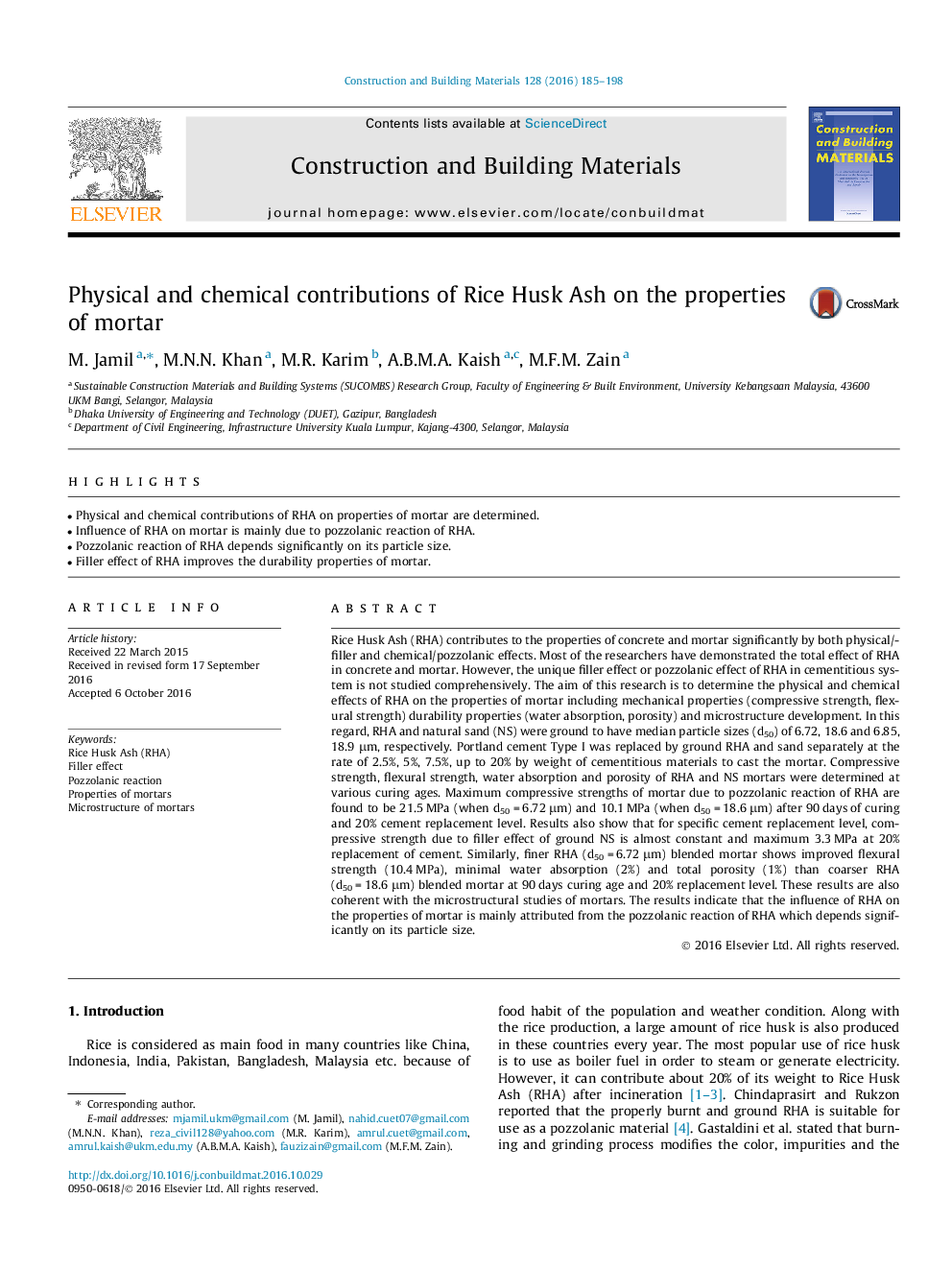| کد مقاله | کد نشریه | سال انتشار | مقاله انگلیسی | نسخه تمام متن |
|---|---|---|---|---|
| 4914036 | 1428778 | 2016 | 14 صفحه PDF | دانلود رایگان |
عنوان انگلیسی مقاله ISI
Physical and chemical contributions of Rice Husk Ash on the properties of mortar
ترجمه فارسی عنوان
مشارکت فیزیکی و شیمیایی پوسته برنج بر خصوصیات ملات
دانلود مقاله + سفارش ترجمه
دانلود مقاله ISI انگلیسی
رایگان برای ایرانیان
کلمات کلیدی
موضوعات مرتبط
مهندسی و علوم پایه
سایر رشته های مهندسی
مهندسی عمران و سازه
چکیده انگلیسی
Rice Husk Ash (RHA) contributes to the properties of concrete and mortar significantly by both physical/filler and chemical/pozzolanic effects. Most of the researchers have demonstrated the total effect of RHA in concrete and mortar. However, the unique filler effect or pozzolanic effect of RHA in cementitious system is not studied comprehensively. The aim of this research is to determine the physical and chemical effects of RHA on the properties of mortar including mechanical properties (compressive strength, flexural strength) durability properties (water absorption, porosity) and microstructure development. In this regard, RHA and natural sand (NS) were ground to have median particle sizes (d50) of 6.72, 18.6 and 6.85, 18.9 μm, respectively. Portland cement Type I was replaced by ground RHA and sand separately at the rate of 2.5%, 5%, 7.5%, up to 20% by weight of cementitious materials to cast the mortar. Compressive strength, flexural strength, water absorption and porosity of RHA and NS mortars were determined at various curing ages. Maximum compressive strengths of mortar due to pozzolanic reaction of RHA are found to be 21.5 MPa (when d50 = 6.72 μm) and 10.1 MPa (when d50 = 18.6 μm) after 90 days of curing and 20% cement replacement level. Results also show that for specific cement replacement level, compressive strength due to filler effect of ground NS is almost constant and maximum 3.3 MPa at 20% replacement of cement. Similarly, finer RHA (d50 = 6.72 μm) blended mortar shows improved flexural strength (10.4 MPa), minimal water absorption (2%) and total porosity (1%) than coarser RHA (d50 = 18.6 μm) blended mortar at 90 days curing age and 20% replacement level. These results are also coherent with the microstructural studies of mortars. The results indicate that the influence of RHA on the properties of mortar is mainly attributed from the pozzolanic reaction of RHA which depends significantly on its particle size.
ناشر
Database: Elsevier - ScienceDirect (ساینس دایرکت)
Journal: Construction and Building Materials - Volume 128, 15 December 2016, Pages 185-198
Journal: Construction and Building Materials - Volume 128, 15 December 2016, Pages 185-198
نویسندگان
M. Jamil, M.N.N. Khan, M.R. Karim, A.B.M.A. Kaish, M.F.M. Zain,
